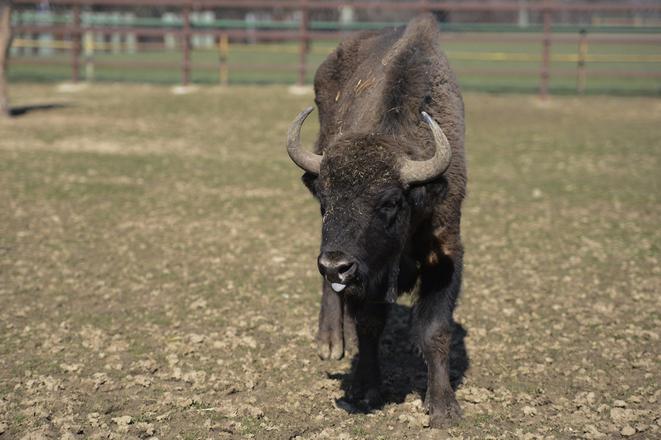Visitors to the Orava region in northern Slovakia will, for the first time, be able to see the grand European bison.
The success of the breeding programme at the bison reservation near Topoľčianky (Nitra Region) means that they have a higher number of young animals than the area can easily support so three bison are to be sold to a private entrepreneur from Námestovo who plans to display them to visitors. Last year, nine calves were born on the reservation, the SITA newswire reported.
To date, 11 animals have been transported to the Šrség national park in Hungary, while others have been taken by the Poloniny National Park.
“We have agreed with our Hungarian colleagues that they will take another four animals this year,” said Michal Garaj, head of the Odštepný Závod Topoľčianky company, which belongs to state-run forestry company Lesy SR, as quoted by SITA.
Breeding requires investment
The European Bison Reservation will keep 20 animals, which is, in Garaj’s word, acceptable for its current size of 140 hectares.
Though the transport of bison is difficult, the reservation’s administrator considers it the only way to reduce the number of this protected species to a sustainable level. The reservation was first designed to keep between eight to twelve bison.
The animals are prospering, particularly after a study in cooperation with the Slovak Agricultural University in Nitra, which specified the exact contents of the fodder that reflects the animals’ need, as reported by SITA. The European bison eat 28 tonnes of the pellets a year and 20 tonnes of hay during winter.
The breeding programme for the bison requires new investments every year.
“We have built new hay sheds and we also plan to strengthen and extend the dividing sectors,” Garaj said, as quoted by SITA, adding that this is also due to security reasons.
The reconstruction of the big enclosure’s fence will last for about 10 years and consumes some €35,000 every year.
Topoľčianky reserve celebrates
This year, the reservation will celebrate its 60th anniversary. So far, more than 200 bison have been born there. Based on an international treaty, all their names begin with “Si”. The problem is solved every year by their young visitors.
“We celebrate Children’s Day on June 1 at the reservation and the children come up with various names from which we pick the best ones,” Garaj said, as quoted by SITA.



 European bison - illustrative stock photo (source: TASR)
European bison - illustrative stock photo (source: TASR)